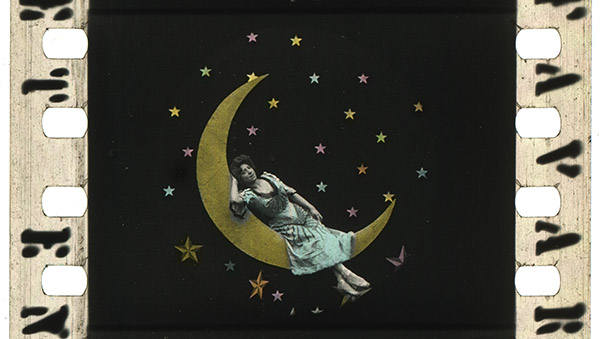Introduced and presented by Joshua Yumibe, professor of film and media studies at Michigan State University.
Live musical accompaniment by Andrew E. Simpson, piano.
Since its emergence in the 1890s, cinema was a colorful medium imbued with the vibrancy of the impressionist palette. Some of the earliest films were hand-colored, frame by frame, often illuminating female dancers moving in a rainbow of hues. As the medium developed at the fin-de-siècle, color’s dazzling effects also became central to the magical trick and fairy traditions pioneered by filmmakers such as Georges Méliès, Gaston Velle, and Segundo de Chomón working in France. Coloring techniques expanded in the early 1900s to encompass remarkably complex systems of film stenciling, as well as tinting and toning. These various methods of applying color to early film were also used in various melodramas and comedies. As the featured films showcase, some of these works reflexively explored the place of color across cinema, art, and painting.
Part of the Color, Cinema, and the Impressionist Moment film series. The screenings in this series collectively explore various techniques, styles, and modes of film coloring during the first two decades of film history to trace the long, colorful time of the impressionist moment.
End times for film events are estimated and may vary with post-screening discussion, audience Q&A, or other factors. All film events finish by 5:00 p.m.
